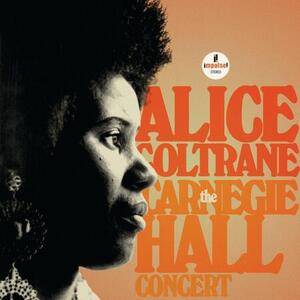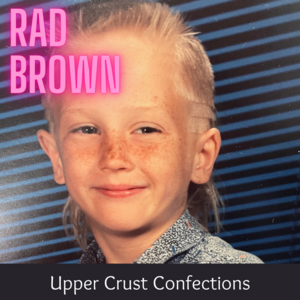
Anita ‘63: A New O’Day is Risen
Anita O’Day–Live in Tokyo 1963 (Kayo Vintage)
by Shelton Hull
The jazz singer Anita O’Day (1919-2006) died at the beginning of what was slated to be another stage in her storied career. A new documentary film was in production, and some reports had the actress Rosanna Arquette set to portray O’Day onscreen. Her final studio album, Indestructible!, had been released shortly before pneumonia did the job that drugs and all the usual maladies of old age could not. The release of Live in Tokyo 1963 adds a nice new chapter to her story on wax, and deserves a long listen.
The footage of O’Day’s concert for Japanese television, taped live on December 30, 1963, has been long-prized by collectors; it is among the videotapes available through her website, all of which will be presumably repackaged on DVD soon. This CD, though, marks the first time this content was easily obtainable in stores, most of which carry only selections of her brilliant run with Verve from the 1950s. Indeed, since her final Verve session was recorded in 1962, this would be the last known Anita O’Day recording prior to the 1970s. And once she was ready for her “comeback” (she’d been there for years), it was the Japanese fans who facilitated it.
For some reason, former Verve boss Norman Granz (who helped build Japan’s jazz scene when he took his Jazz At The Philharmonic Tour to Tokyo in 1952) never signed O’Day to his Pablo Records label in the 1970s– which would surely have yielded some outstanding music– and ageism issues kept her off a major jazz label in the 1990s, even though her older stuff moved real units during all phases of the reissue boom. (Her Mosaic Records box set sold out all 7,500 units at $120 each.) Indeed, a case could be made that Anita’s appeal to Japanese audiences was itself a significant factor behind the boom itself, since it was Japanese firms like Denon that drove the early market.
The first point to be made about this CD, independent of the music itself, is that it approaches the realm of malice not to outfit the package with something approximating liner notes. While some of the details can be gleaned from her biography and website, it’s really a shame not to augment the CD– which is in fact aesthetically spot-on in terms of design– with more than the single paragraph on its reverse side. The track breaks could have been smoother, too, though it’s preferable to having the whole concert as a single track. (That effect undermined MF Doom’s Live From Planet X CD in 2006, incidentally, an otherwise compelling disc that deserved more hype than it got.)
It’s not indicated which tracks featured Toshiyuki Miyama’s and the All-Star Orchestra, and which Takeshi Inomata and His West Liners. I’ve never heard of either organization, but after this introduction I am certainly curious. Using arrangements by Buddy Bregman, which underlie some of her finest material, the groups hold their own with one of the more challenging singers to work with. They are clearly a beat behind the established tempos early on, but tighten up eventually. The horn sections are subtle, but solid from the very start, leaving O’Day to play with the lyric.
The sound begins to jell with “Honeysuckle Rose,” leading into “Avalon” with some very nice hi-hat activity. The horns here play their part just as well as the band in the studio original.
Anita’s set from the Jazz On a Summer’s Day film of the 1958 Newport Festival is given a “preview” for Japanese TV audiences of 1963. The tom-tom intro of her studio version of “Sweet Georgia Brown” is omitted; she moves right into the vamp that follows her first chorus, with the drummer right in sync with the singer. “Tea for Two” is (arguably) her most well-known work; it’s also on her 1958 Live at Mister Kelly’s LP, which has amazingly never been reissued as a stand-alone CD. She quotes “Salt Peanuts” while scatting against horns whose debts to Bird and Diz are stated pretty explicitly. The drummer hangs in, but only the late John Poole had her number to the note on this song.
“Get Out of Town” is probably the album’s highlight, as singer and band hit their stride. By this point they could have probably gone another half-hour, or even a whole set if they were working a live crowd, but instead they tone it down with “That Old Feeling” before closing with the old Woody Herman tune “Four Brothers.”
The mere novelty of this item– the only complete orchestral performance– within O’Day’s output assures it a spot in every Anitaphile’s rotation. Other than a few airshots, movie spots and the aforementioned At Mister Kelly’s (only available as part of the Mosaic box), no other “classic” period O’Day is now known to exist. It’s also pretty good, presenting a nice sample of her work in those years in a logical context– her own set-list. Her takes on every song are consistently different from those more familiar from the albums.
If the end of her physical existence– for this writer, a cold and crushing close to a calamitous year– was inevitable, so too it is that the former Anita Belle Colton would get her proper due as one of the most important singers to work in the English language. This fact has been acknowledged among the cognoscenti, but the jazz public at large has only a passing familiarity with her output. That is certain to change, as any proper pantheon already includes the “Jezebel of Jazz”. And as things are going, Anita O’Day may be due for that sort of posthumous push. Good!
Kayo Stereophonic: http://www.kayostereophonic.com/ ◼












